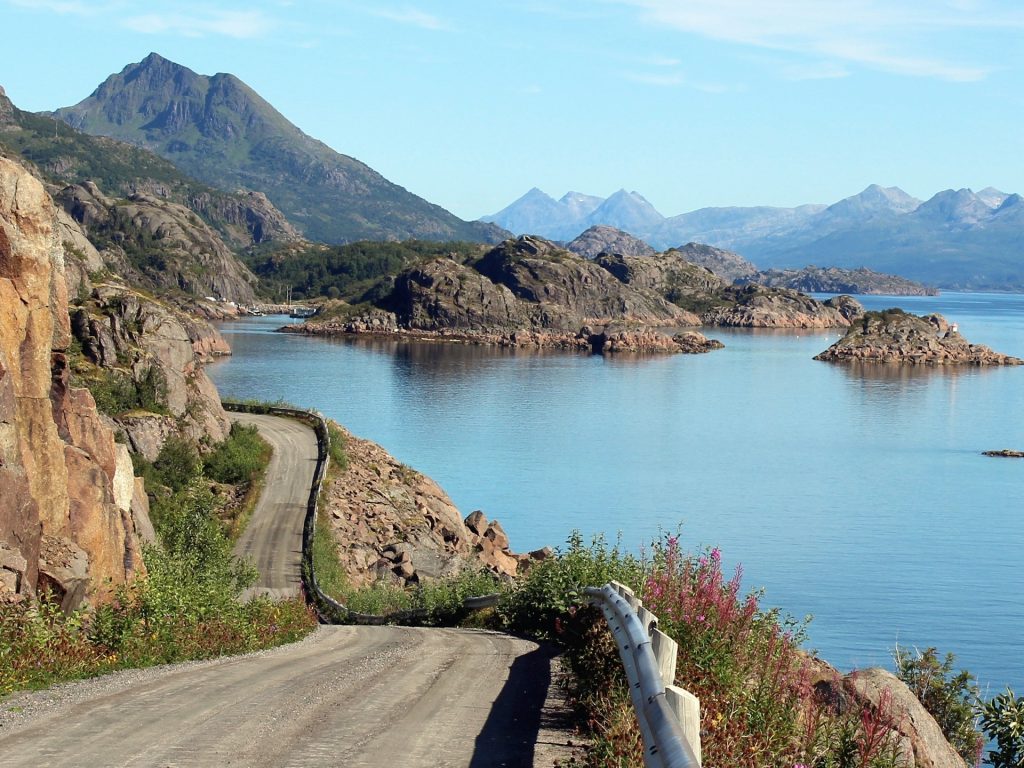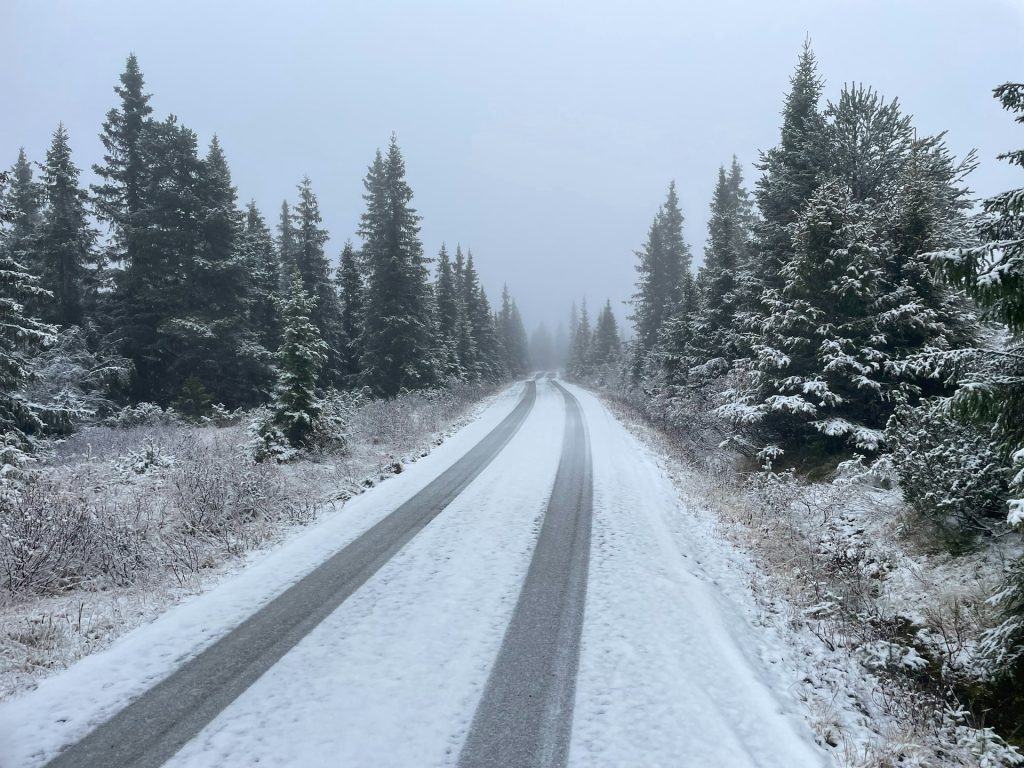Driving in Norway is a joy, with fjords around one bend and mountains around the next. It is also tightly regulated, and speeding tickets in Norway are both common and expensive compared to many countries. If you are planning a road trip here, a little homework will save you money and stress.
In short, Norway enforces speed limits strictly, using both police controls and a dense network of fixed and average speed cameras. Minor excess speed usually leads to a fixed fine, while larger violations can mean demerit points, a suspended license, and in serious cases a court case. Foreign drivers are treated the same as locals, and rental companies will pass on the bill, often with an administrative fee. Keep your speed steady, read the signs, and you will be fine.
Let’s look at how speed limits work, how enforcement actually happens on the road, what to expect if you are stopped, and the practical steps for paying or appealing a ticket. I will also share a few local tips from years of driving Norwegian roads, in every season and every kind of weather.

Speed Limits in Norway, in Practice
Speed limits are posted clearly and change more often than visitors expect. As a rule of thumb:
- Urban areas are commonly 30, 40 or 50 km/h. School zones and residential streets frequently drop to 30.
- Rural roads vary from 60 to 80 km/h. Norwegian rural roads are narrow, often with blind crests and curves, so 80 km/h can still feel fast.
- Motorways are usually 90, 100 or 110 km/h. The 110 limit is only on selected stretches of the best motorways.
When in doubt, the last sign controls your speed. If you have not seen a sign in a while, do not assume the limit is 80. Norway rarely uses a default speed sign at the border of towns, so keep an eye out after every major intersection. If you pass a sign that shows a speed limit inside a red circle, that is the new limit from that sign onward. A grey sign with the same number and a diagonal line means the limit you just saw has ended.
How Speeding Is Enforced
Norway relies on a mix of technology and police patrols:
- Fixed speed cameras. You will see yellow warning signs before most fixed cameras. The camera itself is usually a grey box by the roadside. These check your speed at a single point.
- Average speed zones, called streknings-ATK. These are common on busy or risky stretches, and they calculate your average speed between two or more camera points. Do not slow down only at the first camera, then speed up. Your average speed is what matters.
- Utrykningspolitiet (UP), the highway patrol. Officers use laser or radar and will stop you on the spot. In the west and north you will meet UP at tunnel exits and on long fjord approaches, where drivers tend to roll too fast downhill.
- Unmarked cars. Not rare on motorways. If an ordinary-looking car sits behind you at a steady distance, keep it calm and legal.
What Counts as Speeding
Exceeding the limit by even a small margin is still an offense. Norway builds small margins into equipment calibration, but you should not count on a “buffer.” If your speedometer shows 5 to 10 over, assume you are at risk, especially in 30 and 40 zones where the tolerance feels smallest.
As a local rule of thumb, the lower the limit, the less leeway you have. Ten kilometers per hour over in a 30 zone is treated more seriously than 10 over on a 110 motorway, because the real-world risk to pedestrians and cyclists is higher.
Fines, Points, and When It Gets Serious
For minor to moderate speeding, you will normally receive a fixed fine. The amount depends on how much you exceeded the limit and what the original limit was. In addition, you may receive demerit points, known as prikker. Accumulate enough points within a set period and your license will be suspended.
If you are well over the limit, the case can move beyond a fixed fine to a court process, where penalties might include an income-based fine, a longer suspension, and in the most serious cases, a short jail sentence. The threshold for this is not sky high, particularly in low speed zones.
Two details visitors often miss:
- New drivers on a probationary license are judged by the same limits, but the consequences can bite harder.
- Commercial drivers or drivers of heavier vehicles can face stricter scrutiny, especially on mountain passes and in winter.
What Happens If You Are Stopped
If UP stops you, stay calm and courteous. You will likely be told your measured speed, the limit, and the resulting penalty. For many cases the officer can issue a simplified fine on the spot. You will be offered to accept it, which is essentially acknowledging the offense and agreeing to pay. If you do not agree, you can decline and the matter may go to a formal process.
Foreign drivers may be asked to pay immediately or provide a deposit. Card payments are normal. If you do not have the means to pay or guarantee payment, the police can, in some situations, hold your vehicle documents until payment is secured. With rental cars, the agency will be involved and will add its own administrative fee for processing.
Speed Camera Tickets and Your Mailbox
For fixed or average speed cameras, the ticket is generated automatically and sent to the registered owner of the vehicle. If it is your car, it arrives by post or to your digital mailbox if you live in Norway. If it is a rental, the notice goes to the rental company first, then to you, usually with an added handling fee. This can take a few weeks, sometimes longer, so do not be surprised if a camera ticket shows up well after your trip.
If a camera photo does not clearly show who drove, the owner can be asked to identify the driver. With rental cars, this is straightforward since the contract lists you.
How To Pay a Ticket
Most fixed fines come with clear payment instructions, including an account number and a deadline. You can pay by international bank transfer if you are already back home. Make sure to include all reference numbers exactly as written. Late payments can add extra charges or lead to debt collection. Ignoring a Norwegian speeding ticket is a bad idea, especially if you plan to return. Unpaid debts can create trouble with future rentals and, in the worst case, with authorities.
Can You Appeal
Yes. If you think the measurement was wrong, the signage unclear, or circumstances unusual, you can decline the simplified fine and request a formal review. Bear in mind that this moves the matter into a more legal pathway, which can be time consuming. For camera tickets, there is also a process to contest driver identity if it truly was not you, but you will be expected to provide credible information about who drove. In my experience, appeals succeed when there is a clear factual error, not simply because the limit felt low.
Demerit Points and License Suspension
Norway uses a points system alongside fines. Different levels of speeding can add points to your record for a set period. Reaching the limit within that period leads to license suspension. The suspension can be weeks or months depending on the case, and if you are a visitor driving on a foreign license in Norway, the suspension applies to your right to drive here.
If you depend on driving, this is where things hurt more than the money. For residents, suspended driving rights can affect work and daily life. Visitors may have upcoming travel plans disrupted, especially if you are on a driving holiday.
Special Attention Areas
There are a few places where visitors commonly slip up:
- Average speed zones in tunnels and on motorways. The speed feels easy and steady, and people relax after the first camera. Keep your speed consistent for the entire section.
- Downhill stretches into towns. Limits drop from 80 to 50 or 40 as you approach a village. Ease off early, not at the sign.
- School zones and shared streets. Expect 30 km/h limits with frequent pedestrian crossings.
- Ferries and port approaches. Traffic flows change quickly when a ferry docks, and you may miss a sign while following the stream.
Tourists and Rental Cars
If you are renting, budget for the possibility of administrative fees from the rental company for handling any fines. These fees are separate from the fine itself. Some companies charge for each fine they process, even if you later prove it was not yours, because their handling still took place.
A few practical tips:
- Record your drivers. If you are sharing the wheel, keep a note of who drove when. It helps if a camera ticket arrives later.
- Set cruise control just below the limit on motorways and in average speed zones.
- Use the car’s speed limit recognition if available, but do not trust it blindly. Norwegian signs can be missed by cameras in snow or tunnels.
- Check the rental agreement for how they handle fines and what fees they add.
Winter Roads and “Safe Speed”
Norwegian law expects you to adjust speed to conditions. The posted limit is never a target if the road is icy, visibility is poor, or traffic is dense. If you are doing the speed limit on glare ice and slide into trouble, that is still your responsibility. In winter, I often drop 10 to 20 km/h below the posted limit and leave a long gap to the car in front. Locals will thank you for driving like conditions matter.

What I Do Personally To Avoid Tickets
A few habits that have kept me ticket-free for years:
- Eyes up for the small repeaters. Norway places small reminder signs after the main speed sign, especially on long stretches. Spotting these helps you avoid drifting upward.
- Lift early before changes. If I see a town ahead, I ease off before the sign so I enter the zone at the right speed.
- Watch the flow, not follow it. Plenty of locals speed, especially in light traffic. If you simply match the fastest car, you might be matching the one who will get pulled over.
- Respect 30 and 40 zones. This is where most visitors get caught and where penalties ramp quickly because of safety.
Bottom Line
Norway takes speeding seriously, and the combination of strict limits, accurate enforcement, and meaningful penalties means you should plan to drive within the rules. If you do make a mistake, deal with it promptly, pay what you owe, and move on with your trip. The good news is that Norwegian roads reward unhurried driving. Give yourself time, keep the pace steady, and you will enjoy the scenery the way it is meant to be seen.